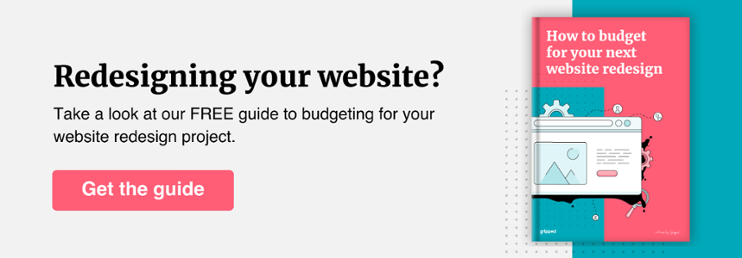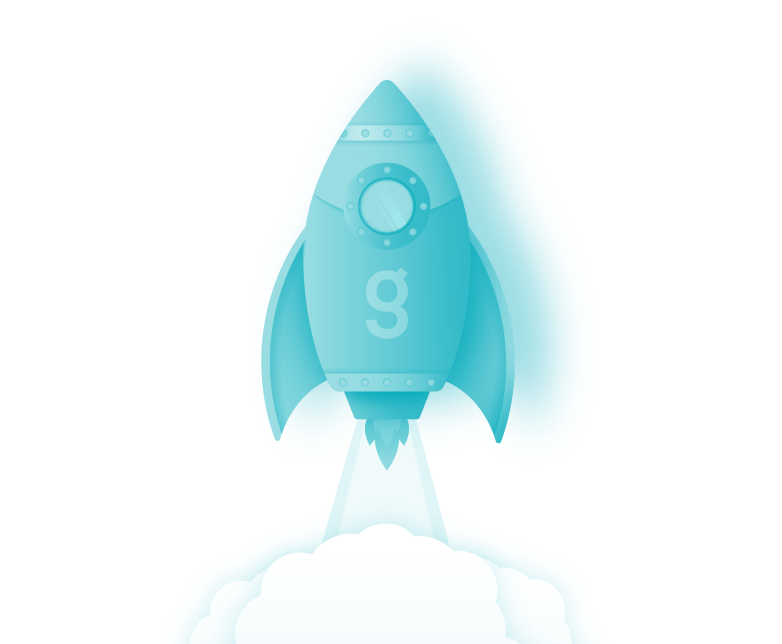How to Revolutionise B2B Web Page Design
Share this article

Revolutionary website quality relies on you nailing one thing — a frictionless UX (user experience) — in other words, a website experience that requires minimal effort from the user. Website friction can be anything on your site that gets in the way of a user interacting with your product, whether that be slow loading times, too much copy, or even your colour scheme.
Does your website have a frictionless user experience? Find out!
Book your free audit today for a website review and ideas for optimising performance.
We can see the difference between a frictionless and a “friction-full” online experience by taking a quick look at features of two of the biggest B2C company websites — Amazon and Google Shopping.
- Amazon: This site has led the revolution in customer-focused online delivery by prioritising speed, choice, convenience and accessibility. This devotion has been symbolised through site features such as dash buttons, one-click checkout, and Amazon Pay. Whereas…
- Friction-full site: An example of a site that doesn’t prioritise the UX is one that in simple terms, hasn’t been built with the UX in mind. That could manifest in extra long drop down menus, overcomplicated or misplaced CTAs, slow-loading sites, enforced registration (i.e. in order to complete an order) — the list goes on, unfortunately there are many many examples of poor UX design.

The importance of frictionless user experiences is no different for B2B brands. In fact, you can revolutionise your B2B conversion rate simply through your web design, just like the B2C example of Amazon above. Having as little friction as possible for users from the moment they land on your site to their conversion will make all the difference to the success of your business.
But how can you go about it? We’re going to walk you through four simple steps to level up your UX by flushing out the friction!
Step 1: Make the product/service accessible
The first step to creating a frictionless UX experience is to get straight to the point of your product or service. The average user only needs 15 milliseconds to form an opinion on your site, which means you’ve got to get in there fast! The key element to improve your B2B sales is to share your product value as soon as possible and in a way that’s completely easy to understand for potential buyers.
Your website must promote product/service accessibility. Frictionless UX is the perfect way to do this thanks to its affinity with the principles of minimalism — “less is more”. Minimalism is all about avoiding the unnecessary and keeping everything from your copy to your coding simple, useful and elegant.
“I strive for two things in design: simplicity and clarity. Great design is born of those two things.” – Lindon Leader.
At the end of the day, you can have the fanciest website but if it isn’t clear and simple and doesn’t give your uses immediate access to your product, it isn’t working.
Strategies to help:
Here are some ways you can make your product accessible:

- Spread out your content: This could mean across your homepage or multiple pages so customers aren’t deterred by chunky blocks of copy.
- Simplify navigation: You can do this by creating a guided site experience and shortening the steps to your product.
- Avoid using technical language: Overuse of overly complex language can cause your site to be inaccessible to visitors, this can be combated by opting for easy to understand copy.
- Offer freemium or free trials: This gives potential customers immediate access to the experience of using your product or service, which should demonstrate the ease of its implementation and configuration.
- Include FAQ pages: Use extensive CX research to inform FAQ pages that answer exactly what your customers want to know about your product or service.
- Use clear and personalised CTAs: Include CTAs (calls to action) that offer ‘audits’ to show the ease of individual application — P.S. make sure to carefully consider where you’ve placed them and what colours and font you use.
- Keep your design consistent: Across your web pages prioritise consistent copy, language and design to avoid any confusion brought about by inconsistency.

Product accessibility is integral to getting your customers to your product and conversions with as little friction as possible, or even no friction at all. Smart, slick and informative design and content will make every bit of difference!
Step 2: Awareness of changing trends
The world of SaaS is constantly changing and trends come and go as quickly as the 38% of site visitors that will quickly stop browsing a website if the layout is unattractive. The top B2B web design best practices are ever-changing but increasingly important to keep your eye on for optimised web page success.
Having an outdated website reflects highly on your potential to not just halt but also decrease your conversions. A huge 94% of users create their first impression of a brand’s website based on web design alone. If your design is old-fashioned, it will directly reflect on how necessary your product or service is to your potential customer.
Strategies to help:
B2B websites are quick to employ an ‘only see the product when you buy’ philosophy to their sites, which, in reality, is just a huge block of friction. The frictionless method turns this on its head and shows the user how your product works in real-time, with real people throughout your site. Here are some standout trends to feature on your website:
- Utilise social proof: Especially through video and on your landing page, as clearly presented and visually appealing customer testimonials to encourage conversions.
- Showcase demos: (Also trending in video form) to give site visitors a tangible experience of what your product offers.
- Opt for personalised experiences: This means features like product recommendations based on a specific user’s purchase and viewing history to catch their eye and make them feel connected to your brand. In turn, avoid the 71% of customers that feel frustrated when a shopping experience is impersonal.
- Provide auto–populate details: Details that automatically input a user’s card details, for example, to remove another frictional step towards a purchase.
- Don’t underestimate a mobile-friendly website: This is because more than half of consumers (57%) won’t recommend your business without one.
- Link your website to social media: This allows you to make the most of increasing customer bases on platforms like Instagram, Twitter and Facebook.
In a world that increasingly values speed, customers are always looking for ways to simplify their UX. Prioritise keeping tabs on the constantly changing trends of frictionless website design and unlock the next level of customer conversions, satisfaction and loyalty.

Step 3: Recognise changing website functions
In the past, b2b website strategies have served a very practical function and nothing more. Now, though, the purpose of UX has changed and companies can no longer get away with basic websites facilitated by very basic functions.
Web design alone now forms 75% of the judgement of a company’s credibility. It’s never been more important to get UX right and provide potential customers with the intelligent, contemporary website functions they’re looking for in order to convert.
Strategies to help:
Your website no longer just exists for practical reasons, it is now one of the best marketing tools in your arsenal.
“Design is not just what it looks like and feels like. Design is how it works.” – Steve Jobs.
Websites are currently designed all around driving conversions and to do that, you’ll need to commit your resources to building the best possible website. Nowadays, even the smallest amount of friction can pull potential customers away from your site, especially if that’s technical errors or delayed loading times.

Here are some ways to avoid losing customers based on website complications:
- Provide UI feedback: Specifically on a user’s actions, like assuring that their request has been received with visual or audio feedback and loading transparency. This avoids “rapid clicks” when a customer is unsure if they have converted, which can cause system errors.
- Get prepared for problems: If you can’t avoid them such as offering guidance with FAQs or information pop-ups.
Implement new website functions and nip potential complications in the bud for high quality, successful B2B web design and optimised conversions. The truth is, though, that’s easier said than done without a helping hand.
Step 4: Consider external help
With all of the added UX expectations, it’s undoubtedly harder to execute the frictionless sites with all of their up-to-date trends that are needed to secure conversions. Hiring a digital marketing agency to create a website worthy of your brand (and more!) will revolutionise your webpage design and your turnover as a result.

UX research around your target audience, staying on top of trends and minimising friction all come at a high price of time and financial resources that you may not have available to you in-house. It’s imperative, though, that you invest in a way to make this happen. After all, “websites promote you 24/7: No employee will do that” (Paul Cookson).
Outsourcing specialised help from a digital marketing agency like Gripped will give you the all-important frictionless site necessary for B2B success. It will reveal your brand’s value, establish you as a thought leader within your industry and build trust between you and your potential customers. Without it, you’ll find yourself way behind the website revolution and eating the dust of your competitors.
Reach Your Revenue Goals. Grow MRR with Gripped.
Discover how Gripped can help drive more trial sign-ups, secure quality demos with decision makers and maximise your marketing budget.
Here's what you'll get:
- Helpful advice and guidance
- No sales pitches or nonsense
- No obligations or commitments



Book your free digital marketing review
Other Articles you maybe interested in
Top B2B Web Design Agency Options in 2025
B2B web design agencies play a crucial role in helping businesses stand out against competitors, engage their audience, and generate leads effectively. Your website is at the centre of your digital go-to-market strategy, and selecting the right partner can be the difference between a stagnant web presence and one that drives your growth. Here are…
How Much Does a Website Agency Cost in 2025?
Your website sits at the centre of your marketing strategy and sales process — and if it doesn’t, it should. Your website needs to do more than provide a good user experience and some information about what you do. In 2025, your website needs to reach your audience, drive leads and convert. If it’s not…
What is a Google Analytics Landing Page?
Measuring how your website visitors behave is important. By understanding their behaviour, you can make critical and well-informed changes to how your website, campaigns and calls-to-action are structured, planned and executed. Within Google Analytics, you can use Landing Pages to optimise your first interactions with website visitors in a way that has proven most profitable…


